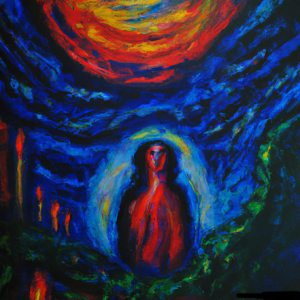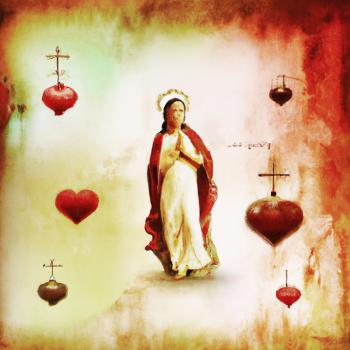
Delving into the similarities and differences between the spiritual teachings of Rumi and the tenets of Christianity
Introduction
Rumi, a 13th-century Persian poet and Sufi mystic, and Christianity, the world’s largest religion based on the life and teachings of Jesus Christ, might seem worlds apart at first glance.
However, when one delves deeper into their spiritual teachings and principles, some surprising similarities and differences can be found.
Let’s compare and contrast Rumi’s works with Christianity’s principles, highlighting the areas where they converge and diverge.
Similarities Between Rumi’s Works and Christianity’s Principles
- Love as a Central Theme
Both Rumi’s works and Christianity emphasize the importance of love as a central spiritual principle.
Rumi’s poetry often explores the themes of divine love and the love for humanity, reflecting the idea that love is a path to spiritual enlightenment and union with God.
Similarly, Christianity teaches that God is love (1 John 4:8) and emphasizes the importance of loving God and loving one’s neighbor (Matthew 22:36-40).
- The Pursuit of Spiritual Growth
Rumi’s works and Christian teachings both encourage the pursuit of spiritual growth and self-improvement.
In Rumi’s poetry, the spiritual journey is often depicted as a process of self-discovery, self-awareness, and inner transformation, leading to a deeper connection with the divine.
Similarly, Christianity encourages believers to grow in their faith, cultivate virtues such as humility and compassion, and strive for spiritual maturity (Ephesians 4:11-16).
- The Role of the Teacher or Guide
Both Rumi’s works and Christianity recognize the importance of a teacher or guide on the spiritual journey.
In Rumi’s poetry, the spiritual teacher or guide, often symbolized by the figure of Shams Tabrizi, plays a crucial role in guiding the seeker toward enlightenment and union with the divine.
In Christianity, Jesus Christ is seen as the ultimate teacher and guide, leading believers on the path to salvation and eternal life (John 14:6).
Differences Between Rumi’s Works and Christianity’s Principles
- Concept of God
While both Rumi’s works and Christianity center around a belief in a higher power or divine being, their concepts of God differ significantly.
Rumi’s works, rooted in Sufism and Islamic mysticism, reflect the belief in a panentheistic God, where the divine is both transcendent and immanent within creation.
In contrast, Christianity adheres to a monotheistic belief system, where God is considered separate from creation and exists as a trinity: Father, Son, and Holy Spirit.
- The Path to Enlightenment or Salvation
The path to spiritual enlightenment in Rumi’s works often involves the annihilation of the ego (fana) and the realization of one’s divine essence (baqa).
This process is achieved through practices such as meditation, contemplation, and spiritual discipline.
In Christianity, the path to salvation is primarily based on faith in Jesus Christ and his sacrificial death and resurrection (John 3:16), with good works and spiritual disciplines seen as manifestations of that faith (James 2:14-26).
- The Nature of the Afterlife
Rumi’s works, influenced by Sufism and Islamic beliefs, often allude to the afterlife in terms of union with the divine or reunion with the Beloved.
The concept of heaven and hell is less emphasized and more symbolic in Rumi’s poetry, with the focus placed on the individual’s spiritual journey and transformation.
In contrast, Christianity posits a more distinct concept of heaven and hell as literal places of eternal reward or punishment (Matthew 25:46). In Christianity, the afterlife is determined by one’s faith in Jesus Christ and acceptance of his sacrifice for humanity’s sins (John 5:24).
Conclusion
While Rumi’s works and Christianity’s principles share some common themes, such as love, spiritual growth, and the role of a teacher or guide, they also differ in their concepts of God, the path to enlightenment or salvation, and the nature of the afterlife.
These differences reflect the unique spiritual perspectives and cultural contexts from which they emerged.
By examining these similarities and differences, we can gain a deeper appreciation of the rich diversity of spiritual thought and expression in the world, as well as the underlying commonalities that connect us as human beings in our pursuit of meaning, purpose, and transcendence.













